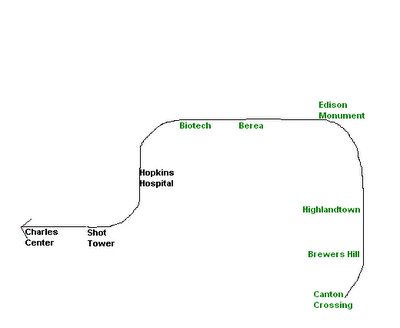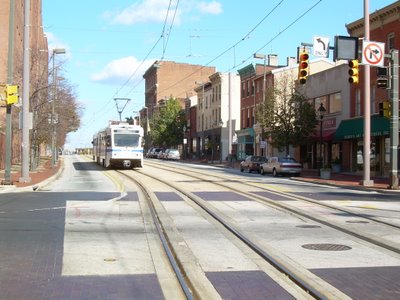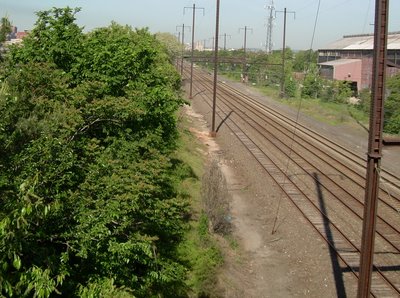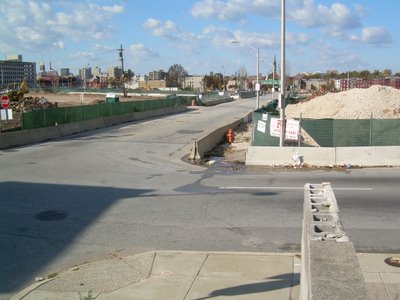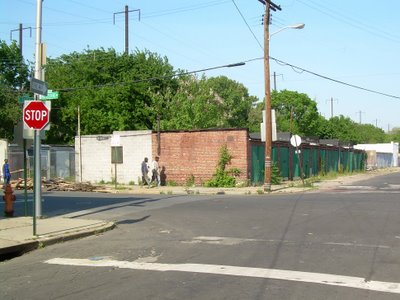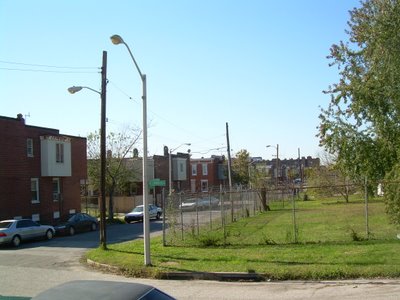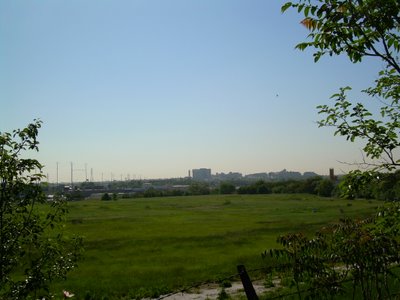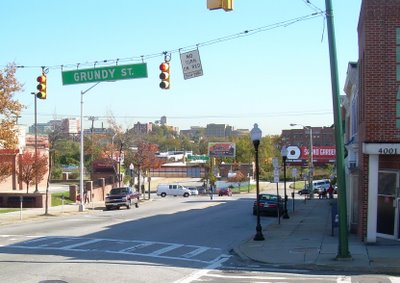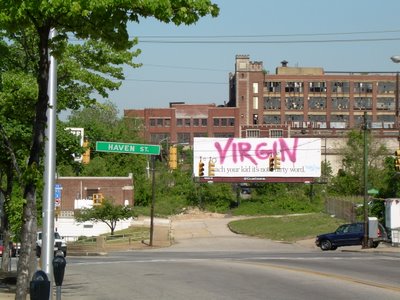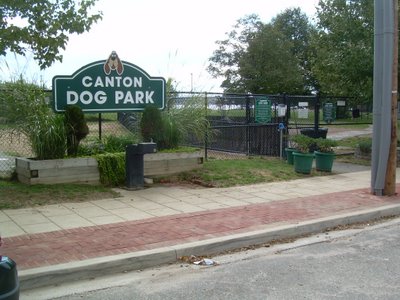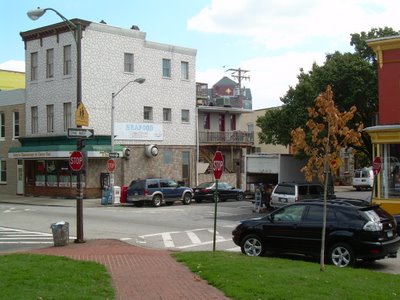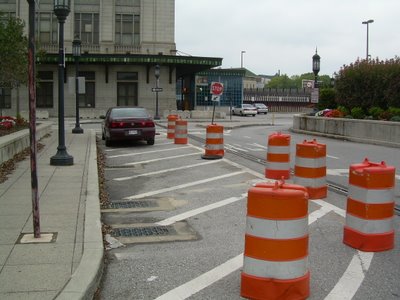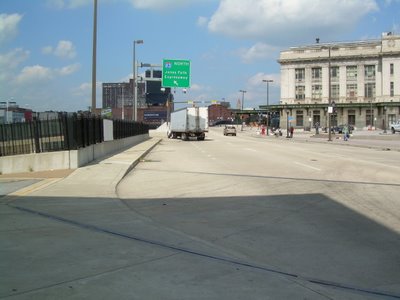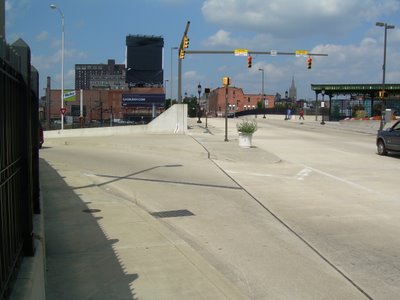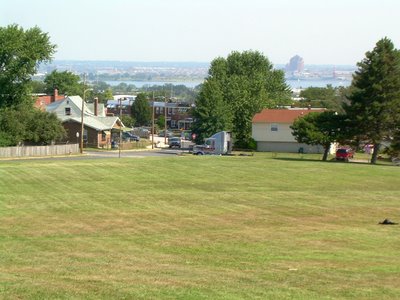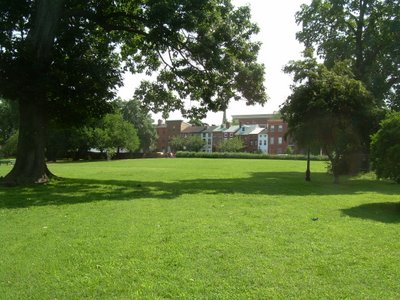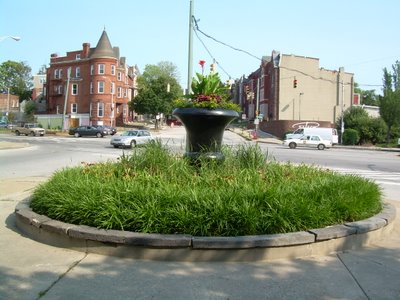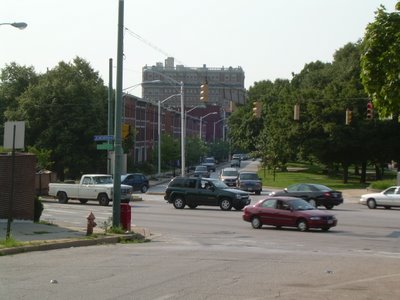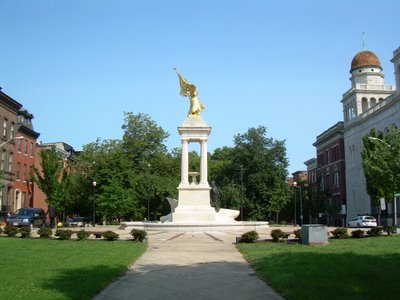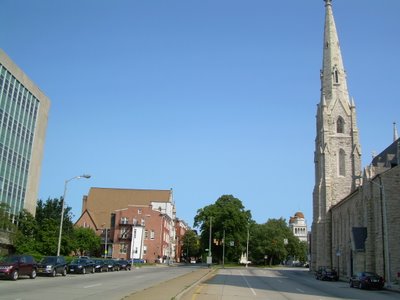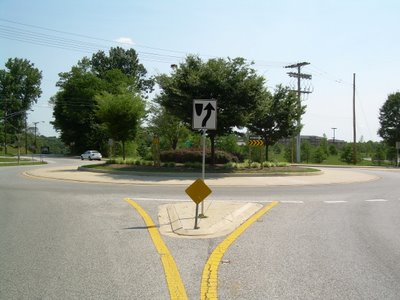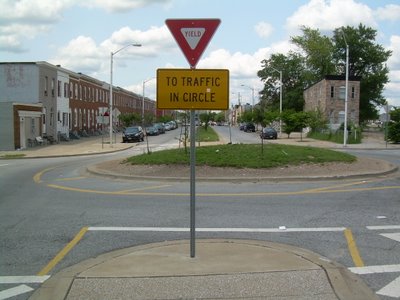Baltimore Innerspace is an alternative master plan that contains actual actions and projects, not bureaucratic gobbledygook. To review, here is your guide to what was covered in 2006.
TRANSIT
THE RED LINE - is the proposed east-west regional rail transit line that needs to be able to do two things:- To integrate the regional transit system so that everything actually connects to everything else.
- To create places where a new kind of urban development can take place that actually depends on transit for its accessibility.In these places, transit should be the dominant travel mode, not a nice "alternative" afterthought to the automobile upon which virtually all of Baltimore's economic growth has relied for the past half century. This requires a clean start, not a subtle retrofit.
EDISON-MONUMENT - is the East Side place where the regional transit system can become truly connected. This is a huge piece of vacant land adjacent to the Amtrak tracks where a comprehensive transit hub can be established for the integration of the entire bus and regional rail systems and MARC Commuter Rail. It is especially essential for East Baltimore and Downtown to have a link to the new super-regional economy, exemplified by the expansion of the military bases at Aberdeen and Fort Meade and the way that the entire Washington metropolitan area is being drawn closer to Baltimore. The Red Line plan for East Baltimore should be an extension of the existing Metro Green Line east of Hopkins Hospital along the Amtrak tracks. The MTA Red Line plans have totally ignored the need to integrate the transit lines in this way.
THE HAVEN STREET CORRIDOR - is the East Side place where the Red Line can allow transit to take its rightful place as the dominant transportation mode for new development. Ambitious development plans are already starting to come to fruition in CANTON CROSSING, BREWERS HILL and BAYVIEW. Ambitious Plans are also on drawing boards in HIGHLANDTOWN and GREEKTOWN. All of these plans need the Red Line to be built on a vacant freight siding adjacent to Haven Street in order to create the kind of transit-dominant environment that is necessary for transit line to have its maximum impact. This is in stark contrast to the "official" Red Line alternatives prepared by the MTA which try to subtly weave through the already established areas of FELLS POINT, CANTON and the BOSTON STREET CORRIDOR, where most development has already happened, travel patterns and habits are already in place, and the Red Line can have only a minimal impact.
THE FRANKLIN-MULBERRY CORRIDOR - is the West Side place where everything can get a fresh start. In most of Baltimore's old "highway war zones" like Fells Point, Canton and Otterbein, people have gotten on with their lives and adapted the vacant lots and structures to fulfill real needs. But people have been mostly just fussing, fretting and doing nothing about Franklin-Mulberry. That is hopefully changing, but you wouldn't know it by the look of what the MTA proposed for the Red Line. What is needed instead is a fresh concept - a downsized highway to reflect that it will never be I-70 but is still useful for funneling through traffic, and a fast efficient transit line which truly integrates with new development to make the most of the vast space available. The West MARC Station anchors the west end of this corridor and provides the multi-modal transit hub opportunities.
NEIGHBORHOODS
CANTON - is truly Baltimore's prototypical urban neighborhood of the 21st Century. That means using some basic tools to allow the aura of Canton to spread around Baltimore - mostly just simple things like four-way Stop Signs, angle parking and rooftop decks, set within the melange of formstone renovations and infill construction. Some people still think that Canton is all about expanding waterfront high rises and the resultant dense human activity, but they're wrong. There are opportunities in Baltimore for more of that, but not in a prototypical urban neighborhood like Canton.
SETON HILL - is one of those unique hidden hideaways where the people try to make a virtue out of their seclusion. Even their big magnificent park is obscured by walls. So seclusion appears to be only a small step from neglect.
THE GAY STREET CORRIDOR - is a forlorn place where the basic principles of traffic flow and traffic engineering have been thrown out along with a lot of other trappings of urban civilization, in what is sometimes referred to as the "Other Baltimore".THE EUTAW STREET CORRIDOR - is Baltimore's closest resemblance to Le Champs Elysees. Well, it's not all that close, but compared with all the other streets urban designers want to call the Champs in their dreams, it's not bad. What Rue Eutaw needs is a roundabout at North Avenue to mend the division between RESERVOIR HILL and BOLTON HILL, and another roundabout at Dolphin Street to mend the division between Bolton Hill and UPTON and STATE CENTER. Roundabouts in these places also make sense from a traffic flow standpoint, making them attractive to sane smart motorists but not crazy ones.
RESERVOIR HILL - is separated from BOLTON HILL by big nasty North Avenue, which was widened many years ago in such a way as to eliminate the reasons why it might have needed to be widened in the first place, except to create a protective moat of destruction around Bolton Hill. Narrowing North Avenue could be part of a plan to mend the division between Bolton and Reservoir Hills, which along with a roundabout would refocus attention on this as a real place and not just a corridor.NEW JONESTOWN - has a sort of traffic calming "thing" stuck in the middle of East Lombard Street at Albemarle, which only has the result of confusing traffic and pedestrians, creating an obstacle for both and taking away parking where it should naturally be. Median strips can be great people places, but only if they are designed very carefully. The new median nearby on South Broadway between Lombard and Fleet Street in UPPER FELLS POINT appears to fill the bill.
BROOKLYN - is absolutely the best neighborhood in Baltimore that has not been discovered by the trendies. There is an eerie resemblance to Federal Hill circa 1970 when you could buy a solid rowhouse hovering above the harbor for well under a $100k in pre-inflation dollars.PENN STATION - is supposed to be a priority neighborhood for City government, but you'd never know by its rather scandalously abusive traffic patterns and street functions, including dumpsters in the middle of Oliver Street and totally uncontrolled expressway-bound traffic whizzing across the sidewalk on Charles Street. See the full Top Ten List of crimes against humanity. This isn't a neighborhood. It's a mess.
MOUNT VERNON - BELVIDERE - is the proposed integration of Mount Vernon, one of Baltimore's most famous neighborhoods, with one of the City's most obscure dead-end streets, Belvidere Street, which ties into our greatest and most celebrated cemetery, GREEN MOUNT. All of this is a logical, beneficial and realistic alternative to one of Baltimore's most spurious recurring pipe dreams, the conversion of the Jones Falls Expressway into a huge surface boulevard in order to attempt to integrate the east side prisons with the west side neighborhood.PARKS
CARROLL PARK - is a great big beautiful park in Southwest Baltimore which is separated from the neighborhoods to the north by an industrial wasteland that virtually ensures that the park will not be an asset to them. The B&O Railroad Museum owns this wasteland, but they are preoccupied by strengthening their museum, not the land development business. What is needed is a whole new community fronting on Carroll Park's north edge in the grand tradition of the streets surrounding New York's Central Park and the more Baltimore-sized ambitions of the streets surrounding Patterson Park. Carroll Park North Edge would also be a fantastic place for a streetcar line to carry the historic B&O Railroad motif from the Inner Harbor to Montgomery Park, the city's largest office building.
FARRING BAYBROOK - is wonderful hidden park of wonderful hidden Brooklyn, with panoramic views spreading out all the way from Downtown to Dundalk.
OTHER UNKNOWN PLACES
THE LOST HIGHWAY - is an Interstate Highway so beautiful that it makes downtown appear in its background like the skyline of Emerald City looks from the poppy fields of the Land of Oz, while the poppy fields themselves make CHERRY HILL look like Roland Park. But there are no ramps to enable Baltimore-bound travelers to use the Lost Highway, so it will remain lost until we click our ruby heels together and build the proper ramps. It's something we could have done anytime, but we seem to be waiting until the Good Witch of South Baltimore tells us to.SOUTHWEST PARK - is so incongruous that even the Land of Oz can't explain it. Located right off the PATAPSCO AVENUE light rail station is a vast green park on the shores of the Patapsco River that is overlooked by a mountain of tractor trailers. This would make a great place for parkfront transit oriented development.
That's the sign post up ahead... your next stop... Baltimore Innerspace.









